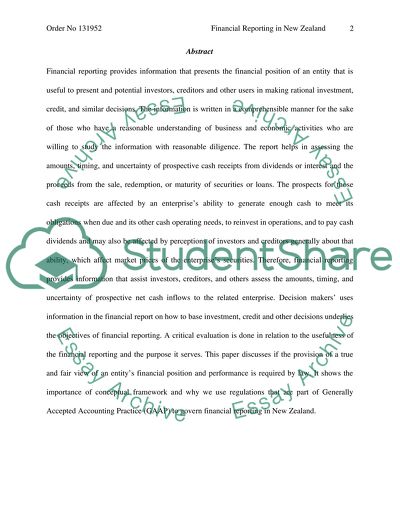Cite this document
(“Financial Reporting in New Zealand Essay Example | Topics and Well Written Essays - 2000 words”, n.d.)
Financial Reporting in New Zealand Essay Example | Topics and Well Written Essays - 2000 words. Retrieved from https://studentshare.org/miscellaneous/1501046-financial-reporting-in-new-zealand
Financial Reporting in New Zealand Essay Example | Topics and Well Written Essays - 2000 words. Retrieved from https://studentshare.org/miscellaneous/1501046-financial-reporting-in-new-zealand
(Financial Reporting in New Zealand Essay Example | Topics and Well Written Essays - 2000 Words)
Financial Reporting in New Zealand Essay Example | Topics and Well Written Essays - 2000 Words. https://studentshare.org/miscellaneous/1501046-financial-reporting-in-new-zealand.
Financial Reporting in New Zealand Essay Example | Topics and Well Written Essays - 2000 Words. https://studentshare.org/miscellaneous/1501046-financial-reporting-in-new-zealand.
“Financial Reporting in New Zealand Essay Example | Topics and Well Written Essays - 2000 Words”, n.d. https://studentshare.org/miscellaneous/1501046-financial-reporting-in-new-zealand.


